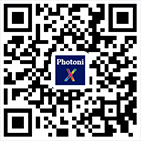摘要:
Waveguide quantum electrodynamics (QED) system manifests an ideal platform for studying many‑body physics. When multiple emitters are coupled to a common waveguide, subradiant states may arise because of the waveguide‑mediated interaction, leading to a long lifetime because of their immunity to the waveguide modeinduced dissipation. However, they can still be influenced by local environments, which are incoherent for different emitters and cannot be canceled out through interference. Herein, a new mechanism termed energy quantum confinement effect (EQCE) is proposed in a non‑Markovian waveguide QED system to suppress the local dissipation. The energy quantum is confined in the waveguide by emitters, suppressing spontaneous decay of the emitters. The EQCE makes the system partly free from local dissipation of emitters, leading to a total decay rate lower than the local decay rate. We further show that similar effect occurs spontaneously by self‑interference and can be stressed by cooperative coupling, relaxing the requirement for initializing the emitters into a remotely entangled state.
Abstract:
Waveguide quantum electrodynamics (QED) system manifests an ideal platform for studying many‑body physics. When multiple emitters are coupled to a common waveguide, subradiant states may arise because of the waveguide‑mediated interaction, leading to a long lifetime because of their immunity to the waveguide modeinduced dissipation. However, they can still be influenced by local environments, which are incoherent for different emitters and cannot be canceled out through interference. Herein, a new mechanism termed energy quantum confinement effect (EQCE) is proposed in a non‑Markovian waveguide QED system to suppress the local dissipation. The energy quantum is confined in the waveguide by emitters, suppressing spontaneous decay of the emitters. The EQCE makes the system partly free from local dissipation of emitters, leading to a total decay rate lower than the local decay rate. We further show that similar effect occurs spontaneously by self‑interference and can be stressed by cooperative coupling, relaxing the requirement for initializing the emitters into a remotely entangled state.









 下载:
下载:



